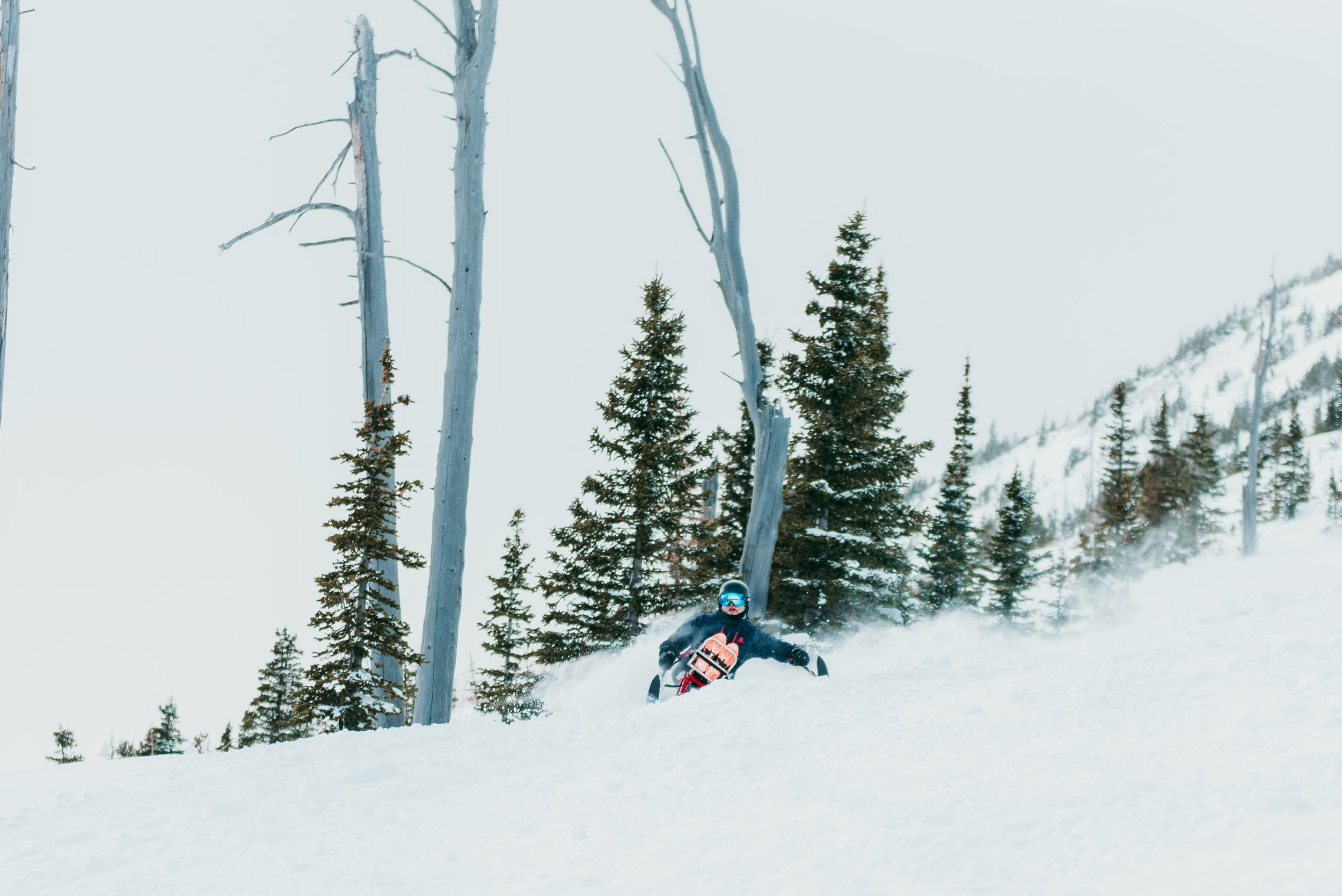“Mom - your new friends are awesome!”
The sentiments of my four-year-old could not have rung truer. She had just caught a glimpse of me photographing the athletes and volunteers of the Alberta chapter of Canadian Adaptive Snowsports (CADS) at Castle Mountain Resort. My new friends were awesome. I was lucky to get to spend some time with the Southern zone of CADS Alberta and get a peek at the inner workings of the association. The eight-week program runs every Saturday during the scheduled season and is one that every skier should get to know a little more about. I had a few assumptions reinforced, while a few were obliterated.
Assumption 1: You need to be an exceptional skier in order to volunteer. Incorrect
Although there were incredible skiers in the group of volunteers with extensive training, there is an opportunity for volunteers of varying ability. There were people helping out representing all ages from teenagers to retirees performing a variety of tasks. During my time with the group, a thirteen year old was learning how to ski with an athlete in the sit-ski. She was well supported physically and through coaching by both knowledgeable volunteers (some with decades of experience and various levels of instructing and patrolling backgrounds) as well as the athlete with whom she was skiing. He, of course, was the expert on his specific challenges and graciously gave pointers that helped them work together. Regardless of skill and ability of both participants and volunteers, everyone in the program was committed to creating equitable opportunity for all skiers in the program. One of the athletes poignantly referred to it as “the great equalizer.”
Assumption 2: CADS is a close-knit and welcoming community. Correct
I would be hard pressed to think of a group more welcoming where I immediately felt at ease and a part of a team. The athletes and volunteers alike shared a love for skiing. Not unlike the ski community at large, there was an instant connection between all participants with a love for the sport, the mountains and the immersive nature of skiing as a whole. Coupling those sentiments with a shared sense of accomplishment by the athletes for overcoming a number of challenges each day lent itself to a community that felt more like family than a ski program.
Assumption 3: Skiers with different strengths, challenges and areas of need would all be skiing together. Incorrect
The goals, interests and needs of the group were extraordinarily diverse, and the corresponding objectives of volunteers were to accommodate the specific desires of each athlete. With autonomy at the top of mind, skiers were able to spend the day on different areas of the mountain and take time learning and honing skills, developing athletic prowess to competitive levels, or simply enjoy the experience of skiing. The CADS mission to spread the joy of experiencing snowsport was achieved, “not only in a fun and inclusive environment that embraces diversity but in an accessible community that treats each individual with respect.” While all participants enjoyed the camaraderie and friendship of one another, they were able to explore different areas of the mountain and get the most out of their ski days independently.
I expected to enjoy a ski day with some new friends and capture a few pictures while skiing with CADS at Castle Mountain Resort. I left the experience with far more than photos. As I parted ways with my new friends I had an increased awareness and appreciation for the challenges adaptive athletes meet daily, and the commitment of this community to overcome them. If you are interested in participating, donating or volunteering please check out CADS Alberta website. I promise you will get far more out of the experience than you can imagine.







